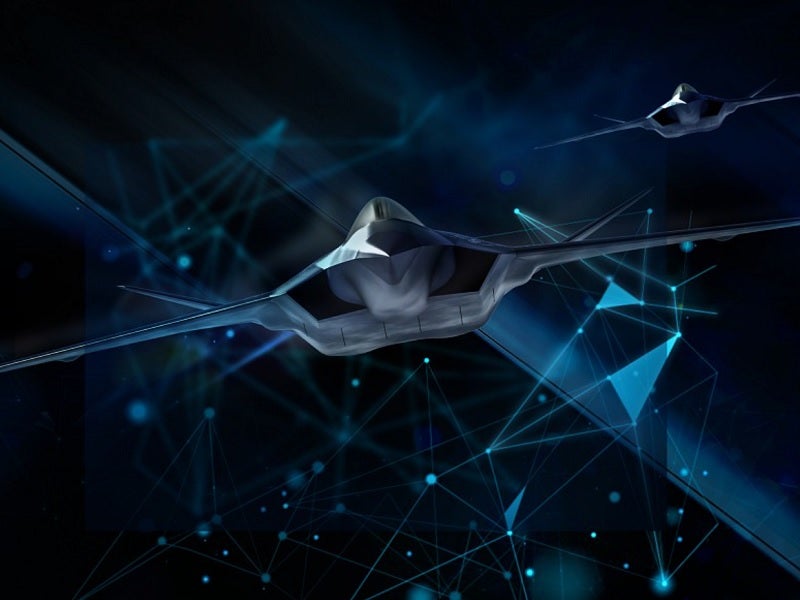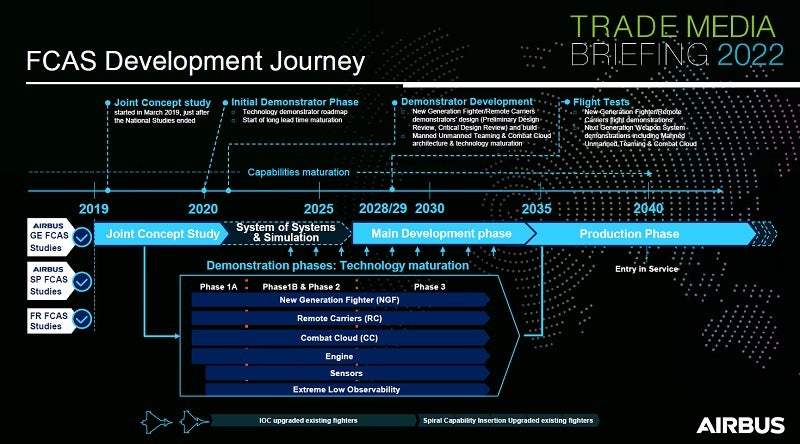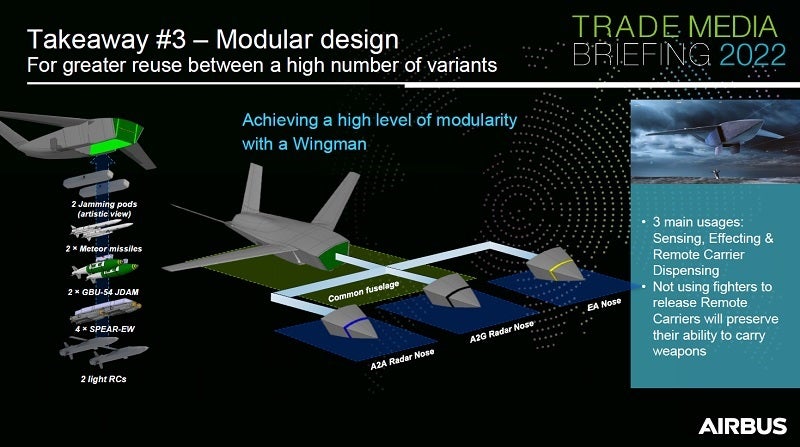Richard Thomas

European aerospace and defence prime Airbus outlined its upcoming technological roadmap for the Future Combat Air System (FCAS/SCAF) programme, including shedding greater light on the Loyal Wingman platforms that will accompany the Next Generation Fighter (NGF) element of the project once in service.
Providing the updates during a trade media briefing on 12 December, Airbus officials detailed the programme timeline of the SCAF, which will see ramp up into Phase 1B by the end of the year, as work continues on demonstrator development efforts related to the NGF, Loyal Wingman platforms, combat cloud architecture, and technology maturation.
Phase 1B and Phase 2 are expected to continue until the 2027 timeframe, at which point the main development phase, known as Phase 3, is due to begin. The main development phase will also see flight demonstrations by early NGF and Loyal Wingman platforms in the 2028-2029 timeframe ahead of a production phase beginning in 2030.
Entry into service for SCAF, comprising the NGF, which is being led by European industrial duo Airbus and Dassault, and Loyal Wingman platforms, is scheduled for 2040. The timeline is further to the right to the rival UK-Italy-Japan Global Combat Air Platform (GCAP) programme, likely in part due to acquisition timelines that do not see the NGF replacing existing 4.5 generation-era fighters currently in service with Germany, France, and Spain.

An FCAS timeline from the Airbus Trade Media Briefing showing the development plan for the next-generation programme. Credit: Airbus
Both Germany and Spain are pushing ahead with additional Eurofighter purchases under the Quadriga Project and Project Halcón respectively, which see 58 platforms acquired by the two countries (split 38-20) under broadly similar configurations. The key feature of the Quadriga and Halcón projects is the integration of the active electronic scanning array European Common Radar System Mk1.
In contrast, the predecessor to the GCAP, Team Tempest, announced earlier this year that a demonstration platform would perform first flight within the next five years. Entry into service is scheduled for the 2035 timeframe.
Uncrewed developments for SCAF
While the SCAF is behind the timeline of the GCAP, and having, according to reports, also taken the decision to not seek non-European participation (unlike GCAP) in the near term, Airbus has been keen to highlight progress in the Loyal Wingman programme area, recently completing networked and uncrewed teaming demonstrations that saw a DT25 drone perform launch and powered flight from the back of an Airbus A400M transporter, as well as data exchange.
Indeed, the A400M was specifically mentioned in Airbus material as undergoing testing for a new future role under the FCAS programme, where it was envisaged that a greater combat mass was required of the Loyal Wingman/autonomous platforms accompanying the NGF. In this scenario, an A400M would carry a payload of 40-50 Light Remote Carriers (LRC) or 8-12 Heavy Loyal Wingman platforms.
By integrating the A400M into the wider SCAF ‘wing’, the NGF would be able to main low observability status and carry more traditional stand-off/direct attack munitions, while also maintaining the datalink with its autonomous charges.
 The HRC showcased in the above slide features a high degree of modularity. Credit: Airbus
The HRC showcased in the above slide features a high degree of modularity. Credit: AirbusA modular design is expected to be incorporated when developing the Light and Heavy Remote Carriers, which would see the use of a common fuselage with optional nose cone sensor payloads such as electronic warfare (EW), and air-to-ground or air-to-air radars.
Slides shown during the Airbus briefing showcased Heavy Remote Carrier payloads including 2 x jamming pods, 2 x MBDA Meteor missiles, 2 x GBU-54 JDAM, and 4 x SPEAR EW or 2 RLC Loyal Wingman platforms.
No comments:
Post a Comment